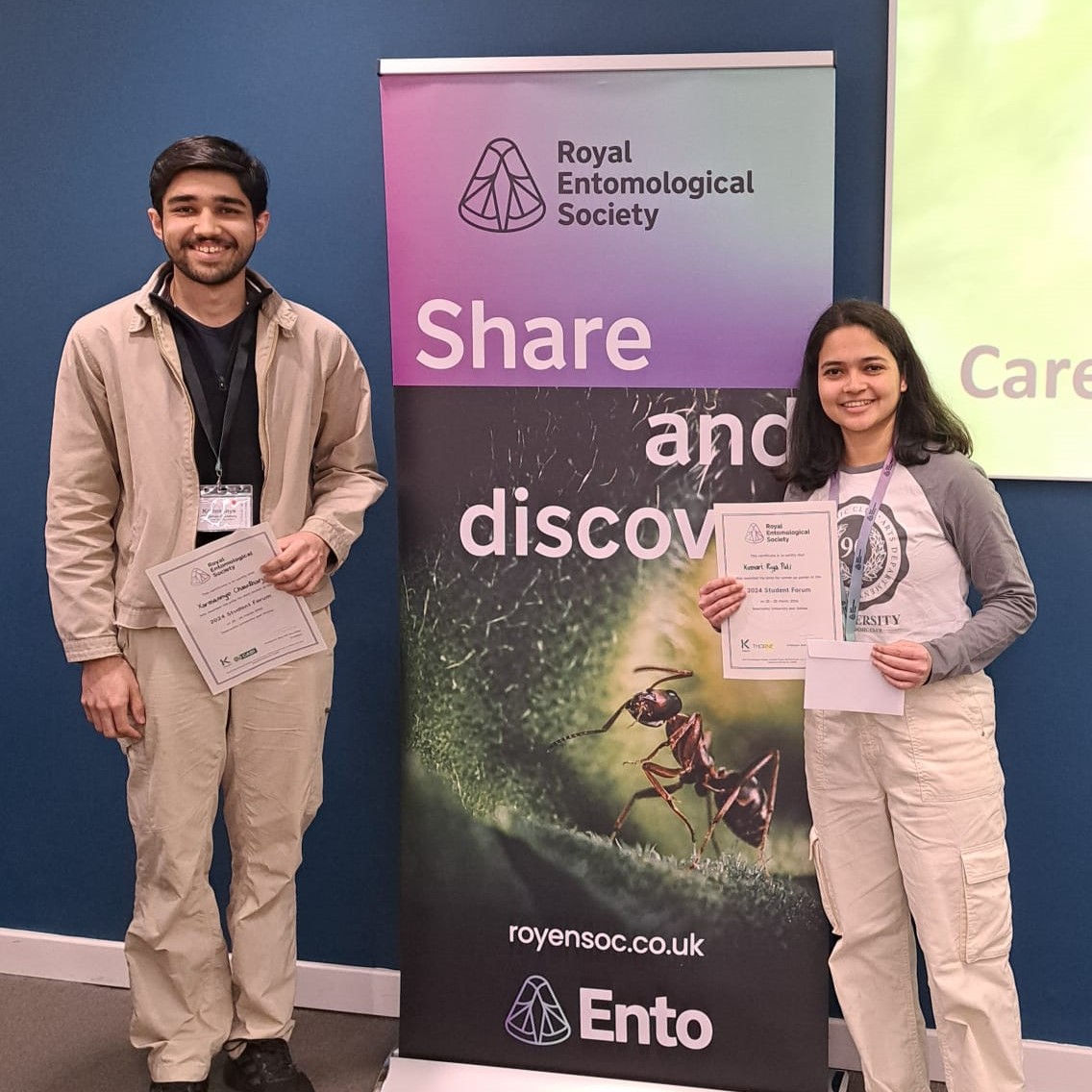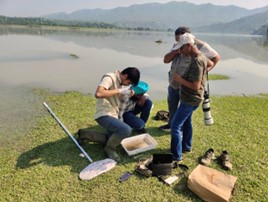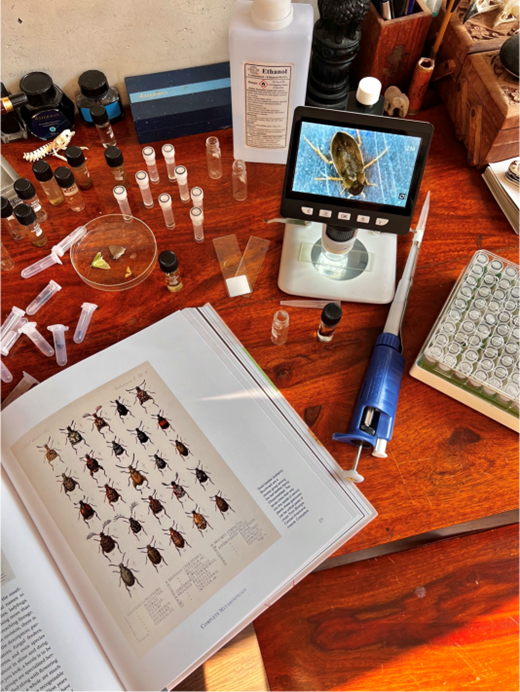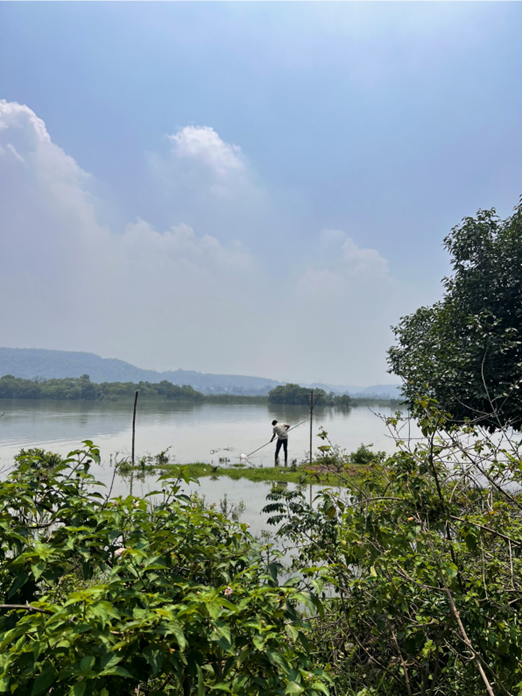SBBS Student wins first prize at Royal Entomological Society Student Event
Meet Karmannye Chaudhary, a second-year Biology student at Queen Mary University of London. But Karmannye's interests go beyond the ordinary – they're particularly drawn to entomology, the study of insects.

Best Poster, Karmannye Chaudhary, Queen Mary University London
Exploring India’s Entomological Riches: Unveiling Biodiversity Marvels.
Recently, Karmannye took their passion to new heights by exploring the realm of aquatic beetles. Their journey led them to the Royal Entomological Society Student Forum, where they presented a poster titled "Diving into Diversity - Aquatic Beetles of Sukhna Wildlife Sanctuary."
This poster on aquatic beetles from India won the first prize for best poster. A incredible feat for a undergraduate student, up against postgraduates and PhD students. We caught up with Karmannye to find out where it all began and how it all went.
You can view Karmannye's poster here: Diving into Diversity: Aquatic Beetles of Sukhna Wildlife Sanctuary [PDF 21,806KB]
Where did your interest in aquatic beetles in India stem from?
It all began when I, in collaboration with the Chandigarh Forest Department and a few volunteers, initiated a waterfowl surveillance programme that entailed a monthly grid-based survey. It was during this time that I began to analyse the waterfowl prey base. In order to investigate this, we conducted surveys of aquatic invertebrates throughout the study area and discovered a number of organisms in our samples; I would photograph the specimens upon my return home from the field. As a considerable number of those specimens comprised aquatic beetles, I became intrigued as to which species they belonged to. Thus, it is exceedingly difficult to visually distinguish between numerous species of aquatic beetles; these organisms must be dissected and their genitalia must be analysed using zoological keys.

In an effort to ascertain the species they belonged to, I promptly began searching for relevant resources and ultimately submitted samples to the Zoological Survey of India for identification. Upon their review, I discovered that several of the specimens belonged to rare species that had never been documented from North India before. By this time, I had returned to London, where I encountered an amateur entomologist during a bird survey who took me to the Natural History Museum to view the British beetle collection.

I made contact with Mr. Max Barclay, the senior curator of Coleoptera at the NHM, while at the museum. Who guided me through the world's Coleoptera collection, where I observed numerous Indian aquatic beetle specimens? In light of the recent information obtained from the NHM, I came up with a strategy to transport a number of beetle specimens from India during the winter break. Upon my return to India, I proceeded to collect numerous specimens from the wildlife sanctuary and various regions of the Shivalik highlands. I was finally able to bring them to London after a month-long absence and immediately began identify and photograph them. Despite advancements in knowledge, the identification of Indian aquatic beetles remains a formidable task due to the scarcity of literature and reference materials on the subject. Mr. Barclay and the extensive museum collection assisted me in identifying and cataloguing the specimens. Although we were able to ascertain the identities of the majority of them, two of them continue to elude us, leading us to speculate that they constitute an entirely new species. Concurrently, I initiated research on a paper aimed at bridging the knowledge divide regarding aquatic beetles in India. I presented the poster pertaining to this study at the conference. By means of this research endeavour, my objective is to compile a database of knowledge that can be accessed by non-scientific or academic enthusiasts such as myself, who are intrigued by the classical taxonomy and collection of beetles.

Was this your first type of large scale presentation on a subject like this?
Indeed, it was my inaugural extensive presentation on the field of entomology, which I have recently embarked with, a mere 9 months ago. The conference came to my attention subsequent to my membership in the Royal Entomological Society, where I submitted an abstract for the conference that ended up being selected for presentation in the poster session. I eagerly anticipated the conference, as I had never attended one before. Upon arrival, I saw that all the attendees were PhD students presenting their research, whereas I was the sole undergraduate presenter. The response to my research was quite positive, with individuals displaying real curiosity and wanting to engage in meaningful conversations.
What advice would you give students who would be interested in taking part next year?
Perhaps the best piece of advice for designing attention-grabbing posters would be to display your research through images or illustrations rather than excessive text. Additionally, it would be beneficial to interact with other researchers and have discussions regarding your research.
What are you hoping to pursue once you’ve finished your undergraduate degree?
I haven't given that much thought just yet; I focused on entomology this year, but I might attempt something different next year.
You can view Karmannye's poster here: Diving into Diversity: Aquatic Beetles of Sukhna Wildlife Sanctuary [PDF 21,806KB]